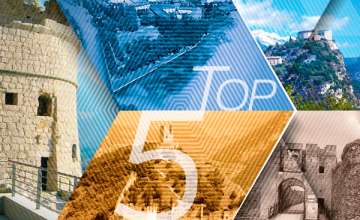Peschiera Fortress
Description
On their journey southward along the lake, visitors come to Peschiera del Garda, where Lake Garda flows into the Mincio river. Due to its geographical position, this area has always been of strategic interest. Indeed, the fortification of the town of Peschiera, in its contemporary form, dates back to the 16th century.
Visitors can access the south-western part of the fortress via the Porta Brescia, crossing a bridge from which the fortified town looms up. Inside the fortification, there are buildings from various periods: the military hospital dates back to the middle of the 19th century, as does the San Martino church, which was built on a Romanesque foundation. Apart from Roman remains, there is the fortress, which was enlarged by the Scaliger family and renovated during Venetian and Habsburg rule.
On the other side of the so-called Canale di Mezzo, the most important branch of the Mincio river, visitors find the Austrian Palleria, once a storehouse for cannonballs,and the artillery barracks. These house the library and the the town archive, while offering a view of the Parco Catullo. The Franciscus I barracks, seat of the police academy, and the Palazzo del Comando of the fortification, both from the Austrian period,are nearby.Visitors can cross the Canale di Mezzo using two bridges, the more westerly of the two leading to the town hall, located in the old cavalry barracks.
The second access to the fortified town leads from the left shore of the Mincio river across two bridges to the Porta Verona, which features a lion of Saint Mark. The route inside the town walls partly leads along footpaths; there are information panels at serveral points along the way, for example at the Roman excavation sites.
Related content
-

Peschiera del Garda
Mentioned in Dante's Divine Comedy Inferno, Peschiera is dominated by lake and river: the Venetian shores of Lake Garda, and the Mincio River. -

TOP 5 Fortresses on Lake Garda
There are various castles and fortresses in the area of Lake Garda, which has been considered as of strategic importance throughout the centuries.



